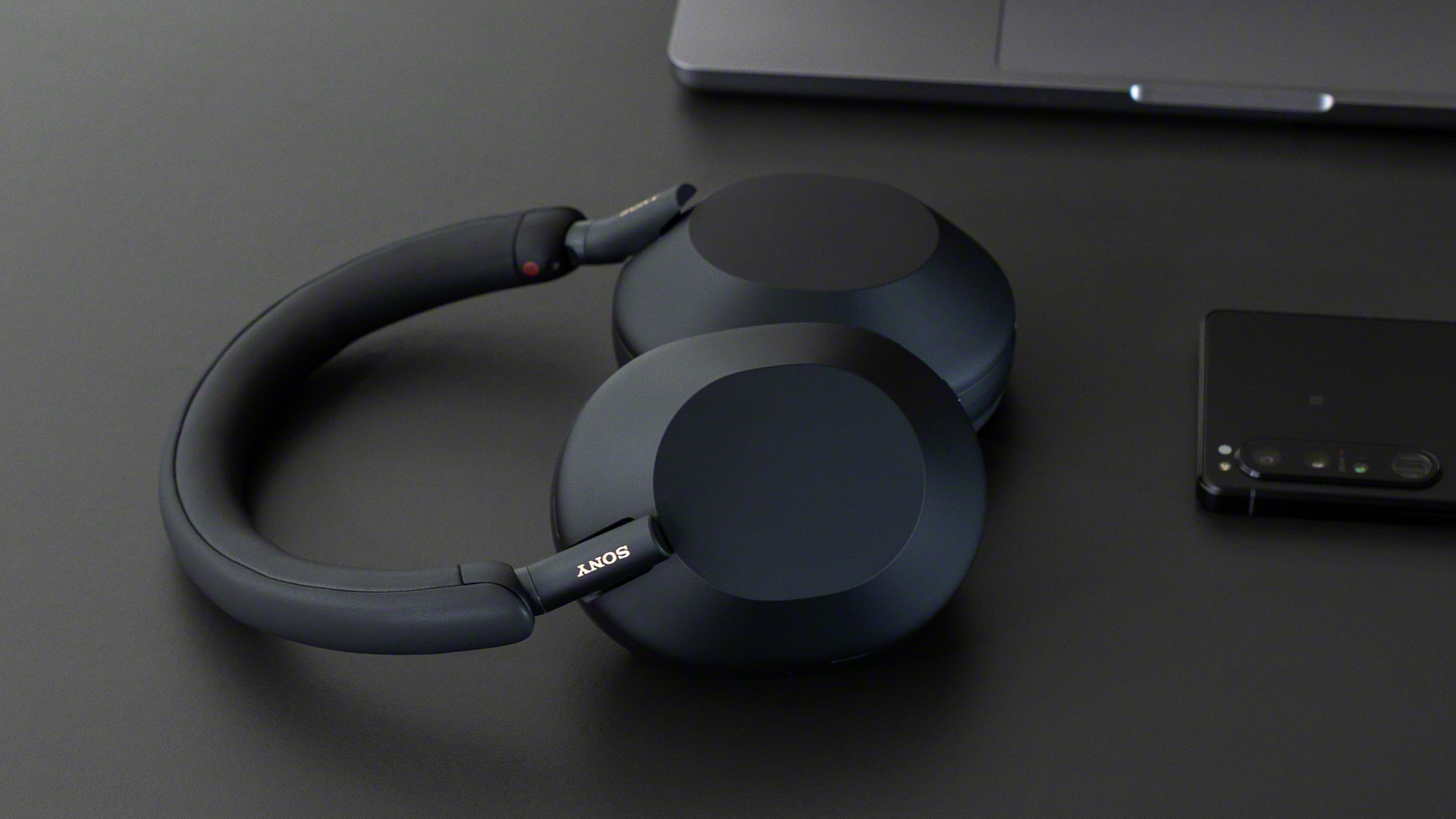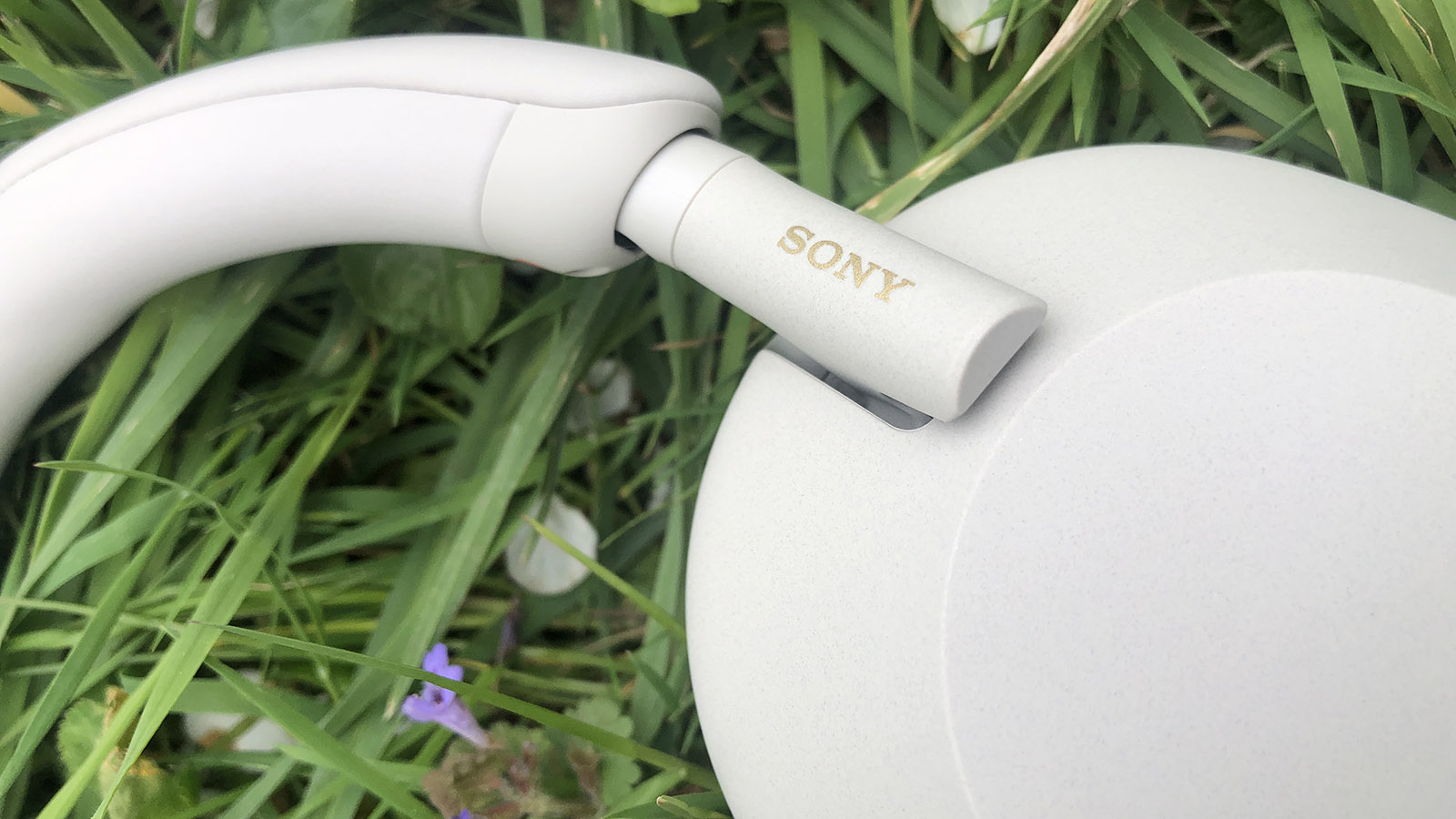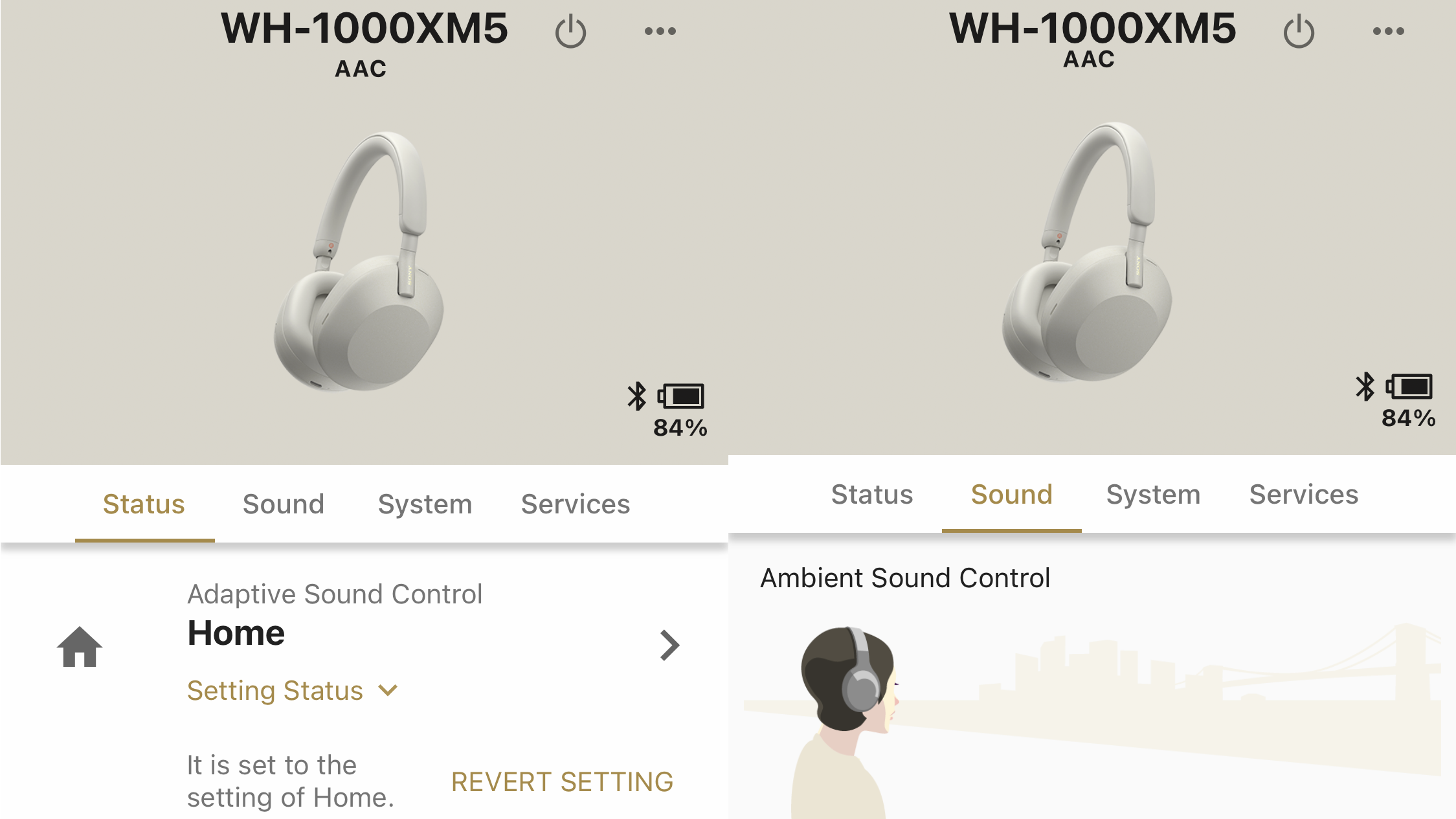Sony WH-1000XM5 review: the perfect headphones?
Want the best active noise-cancelling (ANC) headphones money can buy? Sony's WH-1000XM5 do a superb job



In the WH-1000XM5, Sony has managed to replace the best all-round wireless active noise-cancelling (ANC) over-ear headphones you can buy with, you guessed it, the best new all-round wireless ANC over-ear headphones you can buy. The XM5s don’t come cheap, mind you, but blimey do they impress!
-
+
Confident, expansive, balanced sound
-
+
Sony’s best-ever noise-cancelling
-
+
Numerous control options, all of them good
-
-
Unblinkingly expensive
-
-
Don't fold like earlier XM4
Why you can trust T3

If ever a product is there to be shot at, it’s the new Sony WH-1000XM5. Since it launched the WH-1000XM3 wireless active noise-cancelling (ANC) over-ear headphones back in 2018, and replaced them with the WH-1000XM4 in 2020, Sony has led the field in ANC cans. A combination of splendid sound quality, competitive noise-cancelling, flawless ergonomics, and straightforward desirability established them as the best all-rounders money could buy.
With the WH-1000XM5, Sony is aiming for the hat-trick. But thanks in no small part to its own successes, the premium wireless ANC over-ear headphones market has grown exponentially in the last few years – which means the XM5 faces even more accomplished opposition than its predecessors ever did. No pressure, then…
Sony WH-1000XM5: Price and release date
The Sony WH-1000XM5 are on sale now. In the UK they’re priced £379. That equates to €419 in the Eurozone, $399 in the United States, and AU$649 in Australia.
Make no mistake, this is a premium price – and when judged by pricing across the market as a whole, it puts Sony right at the top of the mainstream. Every credible competitor, whether it’s an alternative from Beats, Bose, Bowers & Wilkins or Sennheiser, is more affordable. For this kind of money, Sony is edging towards the ‘design-led luxury accessory’ market occupied by the likes of Bang & Olufsen.
Mind you, every previous pair of Sony WH-1000X headphones has seen its price tumble as the invariably positive reviews rack up. So unless you absolutely have to be one of the earliest owners of the XM5s, we don’t think you’ll need to pay as much as this. Keep an eye on the XM5 vs XM4 widget below to see the difference between the two pairs too:







Sony WH-1000XM5 review: Features and what's new
The Sony WH-1000XM5 use Bluetooth 5.2 for wireless connectivity, with compatibility with SBC, AAC and LDAC codecs. That’s great as far as it goes but, as with the outgoing XM4, we can’t help thinking it doesn’t go quite far enough. Not everyone has a Sony smartphone, after all, and some aptX codec support would therefore be nice.
Still, Bluetooth 5.2 proves capable of accessing the highest-resolution tier of your favourite streaming service – and once those full-fat digital audio files are on board, they’re handed over to your ears by a couple of 30mm mica-reinforced cellular full-range dynamic drivers. And ‘30mm’ is an unpromising number when compared to the size of the drivers in the WH-1000XM4 and every other pair of headphones that might be judged realistic competition.
The XM5 are compatible with USB-PD (‘power delivery’) charging, so a mere three minutes of charging this way is good for three hours of playback. More conventional charging takes 10 minutes for an hour’s-worth of action, while should the battery run flat it’ll take three-and-a-half hours to brim it. Mind you, at 30 hours of power with ANC switched on or 40 hours when it’s turned off, you’ve really no excuse for running the Sony flat in the first place.
The ANC itself is adaptive relative to your circumstances: the XM5 will learn (or can be told) about your most commonly visited locations and can (if you wish) adapt itself to suit. These features can be switched off, of course, and there’s also an ‘ambient sound’ setting that gives a little boost to external sounds. The level of ambient sound available can be adjusted in the control app.

Sony WH-1000XM5 review: Performance
Imagine if the WH-1000XM5 sounded bad. What a turn-up that would be, eh? What an interesting review this would be, both to write and to read! Well, that excitement will have to wait for another day. And it won't relate to these cans. Because the headlines are: the WH-1000XM5 sound excellent. They’re fully competitive relative to their nominal rivals, and they’re an absolute pleasure to listen to.
Their tonality, for example, is very nicely judged. From the top of the frequency range to the bottom, they’re detailed and naturalistic – nothing’s overplayed or understated, and consequently the impression of unity is strong. The low-end is punchy and controlled, the top-end is politely aggressive, and in-between there’s more than enough fine detail revealed to make a singer sound like a characterful individual.
The soundstage the Sony generate is equally convincing. It’s decently wide and deep, and organisation and control is first-rate – every element of a recording gets plenty of space in which to stretch out and express itself. The unity of presentation isn’t at the expense of separation, but the ability to locate and isolate individual strands of a recording isn’t at the expense of integration or cohesion.

There’s more than enough dynamic headroom to deal with both big volume shifts and the more subtle harmonic dynamics apparent in an unaccompanied piano recording. There’s the sort of rhythmic certainty that makes every dancefloor-focused recording get your feet tapping/head nodding/fingers popping (delete as applicable). And the XM5 are brilliantly attentive to the most fleeting transient details that can really bring a recording to life – but they’re not in any way analytical about it. They simply incorporate them into the vivid overall picture they paint, giving them exactly as much emphasis as they require.
All of this is good news, of course, but it’s hardly earth-shattering. Despite how this section began, no one was really expecting Sony to have taken its eye off the ‘audio performance’ ball, did they? But what might come as a least a gentle surprise is how much Sony has stepped up its ANC game over the outgoing WH-1000XM4.
The noise-cancellation the WH-1000XM4 were capable of was strongly of the ‘very good’ rather than the ‘great’ type. But with the WH-1000XM5, Sony has delivered a pair of headphones that can deal with virtually any external sound short of an HGV moving off from the lights. And it can do so without affecting the audio performance, without leaving any artificiality or impression of counter-signal in its wake, without introducing that ‘cabin pressure’ sensation into the earcups… it’s an undeniable upgrade over the XM4 and makes the case for the WH-1000XM5 being the best pound-for-pound all-rounders you can buy even stronger.

Sony WH-1000XM5 review: Design and usability
Obviously Sony hasn’t torn up the ‘wireless active noise-cancelling over-ear headphones’ design rulebook and started again. But it has made the XM5 look distinct from the model they replace, and that in itself is commendable enough.
The WH-1000XM5 are mostly built from Sony’s favourite new material, acrylonitrile butadiene styrene (ABS – and no, not the brakes). This stuff is good news for a few reasons: it’s useful from an acoustic point of view, it’s made almost entirely from recycled plastic and stone, and it can itself be recycled at the end of its working life. Here it’s moulded into a smooth and almost entirely featureless shape – in the black finish that’s available it looks quite sophisticated, in the ecru alternative of our review sample it looks as bland as warm milk.
That anonymity extends to the way the XM5 are branded – there’s a super-discreet ‘Sony’ logo on each hinge, but other than that these headphones are almost featureless. The right earcup has some mic openings and a USB-C input, while the left has more mic openings, a ‘power on/off/Bluetooth pairing’ button, a 3.5mm analogue input, and a button for cycling through the ANC options. But there’s nothing remotely shouty about the design of the XM5 - which makes them, what? Whispery?
The contact points of the earpads and the inside of the headband are of pleather-covered memory-foam, and they’re comfortable over the long haul – an all-in weight of just 250g (a few grams lighter than the flyweight XM4) helps no end in this regard. Sooner rather than later, though, those earpads will return your body-heat to you, and with interest. And while there’s plenty of articulation in the earcups, the WH-1000XM5 don’t fold in on themselves – but thanks to a collapsable semi-hard carry-case that’s mere millimetres bigger than the headphones themselves, they’re easy enough to transport.

You’ve a few control options here, and all of them are implemented beautifully. As far as the hands-on stuff goes, there’s a capacitive touch-surface on the right earcup which complements the pair of physical controls on the left. Here’s where you can deal with the major stuff: ‘play/pause’, ‘volume up/down’, ‘skip forwards/backwards’, ‘answer/end/reject call’ and what-have-you. It’s as reliable and consistent an interface as you might expect from Sony.
There’s also the option of voice control. The XM5 have a total of eight mics dealing with telephony, ANC and voice-assistant interaction, and they prove every bit as capable as the touch-surface controls. And as well as compatibility with your source’s native assistant, the XM5 also have Amazon Alexa built in. All bases, in this instance, are covered.
The most wide-ranging control, though, is available via Sony’s exemplary ‘Headphones’ control app. Here’s where you can fiddle with EQ settings, adjust the amount of ambient sound you’d like to hear, set up the 360 Reality Audio spatial algorithm using images of your ears, get pestered about listening at excessive volume, pair the XM5 with two devices simultaneously, and plenty more besides. It’s a clean, stable and thorough app, and as such is one of the very best around. Admittedly its ‘clear bass’ option results in nothing of the sort, though…

Sony WH-1000XM5 review: Verdict
No, the Sony WH-1000XM5 certainly don’t come cheap – and at quite a margin compared to the outgoing XM4. But as a combination of sonic fidelity and excitement, top-tier active noise-cancellation (ANC), flawless ergonomics, competitive battery life, and impeccable eco credentials, it’s impossible to lay a glove on the WH-1000XM5. These are hands-down the best active noise-cancelling headphones of 2022.
Sony WH-1000XM5: Also consider
The Bose Noise Cancelling Headphones 700 are well worth considering as we think they're a little more stylish, a little more affordable, and cancel noise with a little more authority. No two ways about it, though, the Sony WH-1000XM5 have the sort of all-court game the Bose find it extremely difficult to live with.
You can read about How We Test headphones, or indeed any kit at T3, on our dedicated page.
Sign up to the T3 newsletter for smarter living straight to your inbox
Get all the latest news, reviews, deals and buying guides on gorgeous tech, home and active products from the T3 experts
Simon Lucas is a freelance technology journalist and consultant, with particular emphasis on the audio/video aspects of home entertainment. Before embracing the carefree life of the freelancer, he was editor of What Hi-Fi? magazine and website – since then, he's written for titles such as Wired, Metro, the Guardian and Stuff, among many others. Should he find himself with a spare moment, Simon likes nothing more than publishing and then quickly deleting tweets about the state of the nation (in general), the state of Aston Villa (in particular) and the state of his partner's cat.
-
 Warning: Ciele’s refreshed Elite Collection may cause excessive garment envy on race day
Warning: Ciele’s refreshed Elite Collection may cause excessive garment envy on race dayFlex on your run crew with Ciele’s latest drop
By Matt Kollat Published
-
 Smeg adds a touch of navy sophistication to its iconic breakfast set
Smeg adds a touch of navy sophistication to its iconic breakfast setIt's a minimalist's dream
By Lizzie Wilmot Published
-
 My most anticipated Netflix movie of the year gets a wild new trailer
My most anticipated Netflix movie of the year gets a wild new trailerHavoc looks pretty unbelievable
By Max Freeman-Mills Published